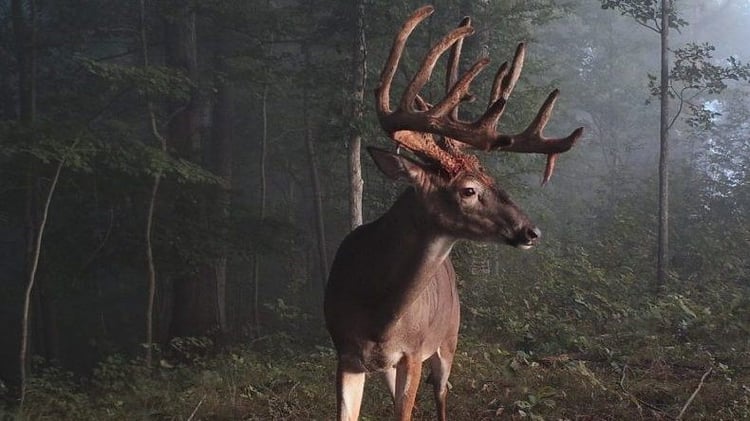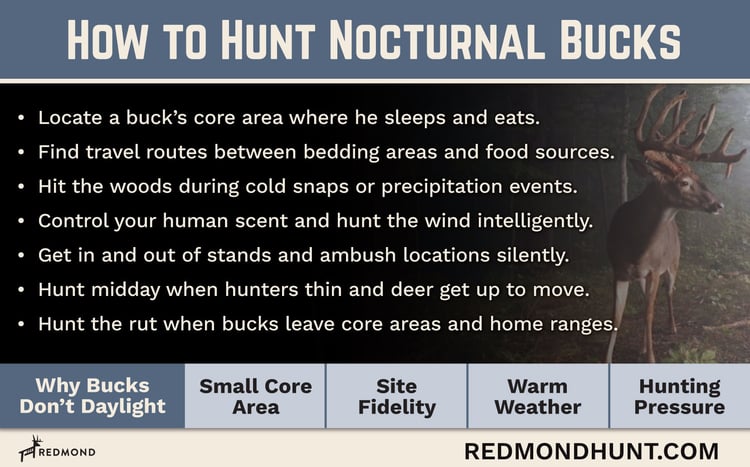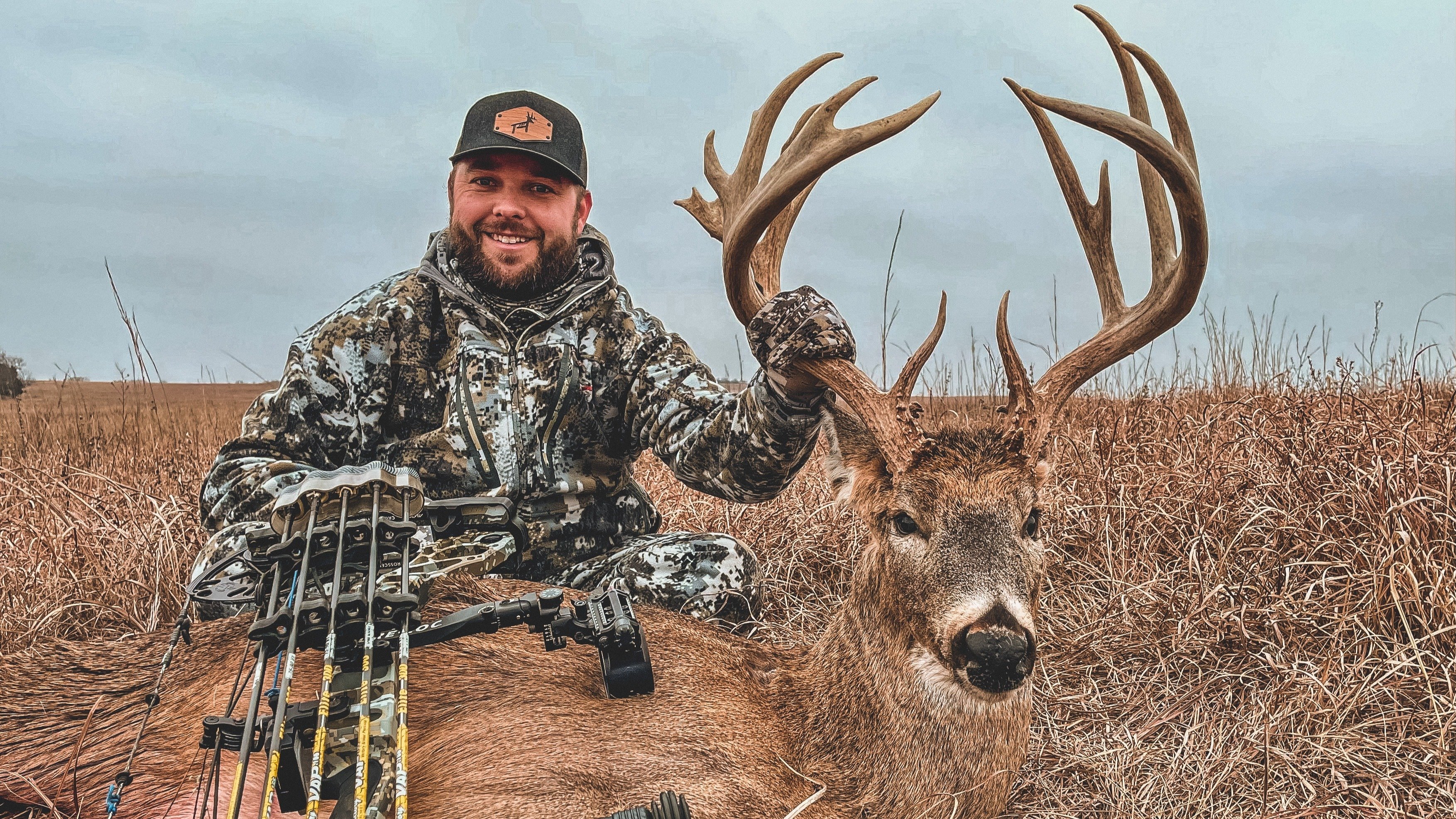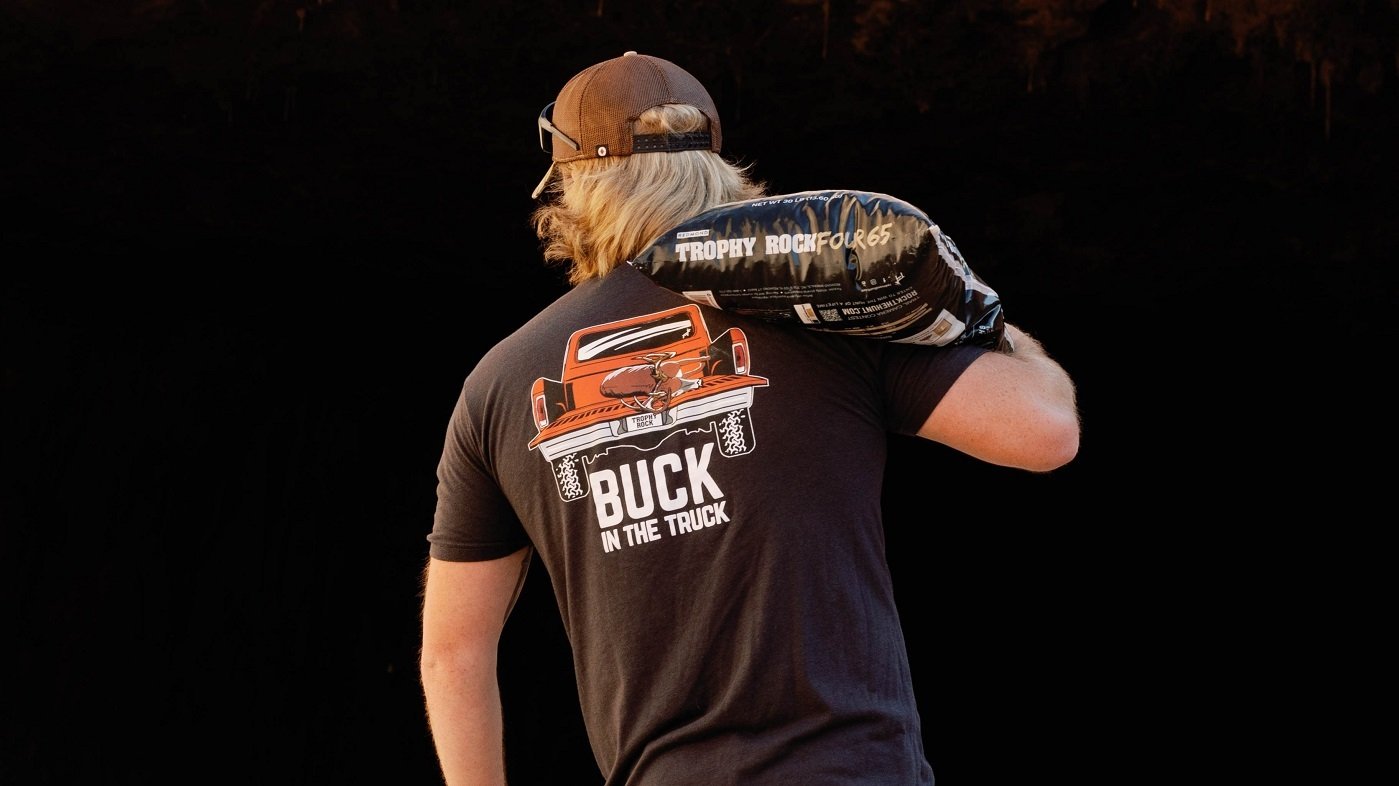Redmond Hunt Blog
7 Tactics to Find & Hunt Nocturnal Bucks
Redmond Hunt September 20, 2023
How do you get nocturnal deer to come out during the day? Learn why whitetail deer go nocturnal and how to hunt nocturnal bucks during daylight hours.
The sun slowly dips below the horizon behind your tree stand. You’re hanging onto your weapon and the last rays of daylight, hoping to sight that elusive nocturnal buck your trail cam keeps capturing photos of at night. Then dusk descends, it’s weapons down—and once again your trophy has evaded you. You’ll go home to reinvent your hunting strategy while your shooter buck lives to fight another day.
If you're an early- or late-season whitetail hunter, you know getting a mature buck to daylight—and making sure you’re in his path when he does—can be a frustrating challenge. It requires woodsmanship, the right hunting conditions, and more than a little luck. So, how do you successfully hunt deer in daylight? In this blog, we decode the secrets of the nocturnal buck and give you a roadmap for tagging your target.
Are Deer Really Nocturnal?
A buck that's “gone nocturnal” refers to deer changing activity patterns to move more after dark than during the day. And since it’s illegal to hunt by moonlight, that presents a problem for hunters.
But are deer really nocturnal? Do they only move at night when they’re not fair game for hunters? Not exactly. Deer are crepuscular: they’re most active near sunrise and sunset, and typically more active at night than during the day. This is especially true for mature bucks.
Matt Ross with the National Deer Association explains it this way: “…you can count on two things when talking about mature bucks: they move most at dawn and dusk and during the rut. It’s in their DNA.”
But this doesn’t mean deer aren’t at all active during shooting hours. We know they need to feed at least twice during the day, and certain other motivating factors—like the breeding season—can get bucks on their feet when the sun is overhead. We’ll talk more about that in a bit. But first, why do deer go nocturnal?
Why Don't Nocturnal Deer Come Out During the Day?
While deer aren’t nocturnal in the true sense of the word, wise old whitetails can still perform a convincing daytime disappearing act. So where in the woods are they? Let’s look at four factors that turn deer nocturnal and why you may not see bucks during daylight hours.

Small Core Area
It’s highly likely your target deer is simply limiting movement to a small area that meets all his survival needs. A buck’s home range is about one square mile in size (though this can increase significantly during the rut) and is where he lives 90-95 percent of the year.
Within that home range, a buck has a core area that’s around 60-85 acres. This area usually has ample food and cover and is where he spends at least 50 percent of his time—or more if he’s feeling pressure from hunters. A buck’s core area is also typically a densely vegetated, gnarly, tangled thicket of woods that’s easy to hide in and ridiculously hard to hunt.
As an example, check out this fascinating visual study by the National Deer Association. It shows a collared buck’s movements from June to October. Notice how tight his core area is and how little he strays from it day or night until cooler weather and the rut begin. And even as he ventures out and extends his boundaries, he’s still mostly moving at night.
To harvest this deer—and others like him—a hunter must find a buck's core area and close in during daylight hours, without being detected, through thick vegetation. Difficult to accomplish? Yes, but for the savvy hunter, not impossible.
Maturity
Research also suggests as deer age, site-fidelity increases. In simple terms, that means big deer are loath to leave or change where they live as they get older. So we can assume a reclusive, mature buck is probably sticking close to the comforts and security of home (his core area) where he’s survived for several or more years. This contributes to fewer sightings—daytime or night—by hunters.
Warm Weather
Seasonal changes and warm weather also impact deer hunting. Hot summer days stifle movement and usually cause deer to hole up. So if it’s early bow-hunting season and 80 degrees out? You should probably bank your expectations of encountering a big buck during daylight. Deer will instead venture out at night when temps cool to a comfortable degree.
Hunting Pressure
Areas with a lot of daytime human activity—especially from hunting pressure when the season is in full swing—will probably see little daytime deer activity. Strange smells, the whine of motorized vehicles, and even subtle noises like the scrape of a zipper or Velcro contribute to bucks retreating and turning nocturnal.
7 Tips for Hunting Nocturnal Deer
Every buck is huntable, even the elusive night dwellers that seem impossible to track down. So how can you increase your success of harvesting a nocturnal buck during the day? Here are seven tips for how to find and get nocturnal deer and big bucks to move in daylight.
1. Locate Core Area
You now know how key a buck's core area is to survival. Find out where it's located—particularly where his bedroom is—and you’ll likely find his daytime hideaway. Scouting and using trail cameras to survey deer can be great tools to help you gather intel, pattern a buck’s movements, and hone in on his core area.
2. Know Travel Routes
Deer have preferred travel corridors from bedding areas to food sources. If you’re within your deer’s core area and on his preferred trail? Chances are you’re going to encounter him during daylight at some point. Again, trail cameras are handy to help you determine frequently used deer travel routes.
3. Work with Weather
A powerful motivator to get deer up and moving is a significant cold front or precipitation event. Early- or late-season temperature drops and storms often trigger nocturnal bucks to move a bit more during shooting hours. So get in the woods when the weather changes, and also remember to hunt the wind intelligently.
4. Control Your Scent
A deer’s nose is its most powerful survival tool. It allows them to sense danger, find food, and sniff out other deer from half a mile away or more. That also means deer can smell you from an impressive distance. Eliminating your scent is critical when hunting a reclusive nocturnal buck. Find odor-reducing tips in this blog.
5. Go in Stealth
You’ve been told ad nauseam not to spook the deer. But most of the time we don’t realize just how much noise we make, even when we’re trying to be ultra-quiet. Wrappers, snaps, crackling packs, clinking carabiners—and especially our side-by-sides—are like death knells to deer’s fine-tuned ears. Get in and out of ambush locations silently and create noninvasive access points to stands and cameras so as not to disturb wary bucks’ core food sources and bedding areas.
6. Avoid the Crowds
Deer are naturally inclined to move at sunrise and sunset, so of course, that’s when hunters hit the woods hard. To avoid pressure from the crowds, try hunting nocturnal bucks from more secluded areas or at midday when many hunters abandon their efforts for a few hours. Specifically, try between 10 a.m. and 2 p.m. This period has proven fruitful for persistent hunters, and studies show it’s a time when deer get on their feet—particularly if it’s chilly.
7. Hunt the Rut
If all else fails and your target buck refuses to daylight, wait until he follows the call of nature during the rut. The breeding season is the most powerful influence on a nocturnal buck and the most likely time he’ll roam. Most mature bucks change patterns and cruise outside core areas and even beyond the boundaries of home ranges during the rut. You just need to be in his path when he does. Find helpful tips here to successfully hunt the rut.
Hunting Tip: Incorporating a quality attractant into your hunting strategy can also be an effective tool to lure in nocturnal deer during daylight. Liquid Trophy Rock has a powerful scent and sweet-n-salty flavor deer can't resist. Pour it directly on the ground or top it over other attractants to quickly activate a site and bring in hard-to-hunt bucks. Check out this in-the-field test where Liquid Trophy Rock got deer to daylight and outperformed other top-selling liquid deer attractants. Or click below to learn more and purchase today!
Taking down a nocturnal buck is a test that demands patience and a solid understanding of its habits and habitat. By hunting smart and deploying the tactics above, you can improve your chances at successfully tagging your trophy. So get out in the woods, and good luck out there!
© Redmond Hunt 2023. All rights reserved.




.jpg)
